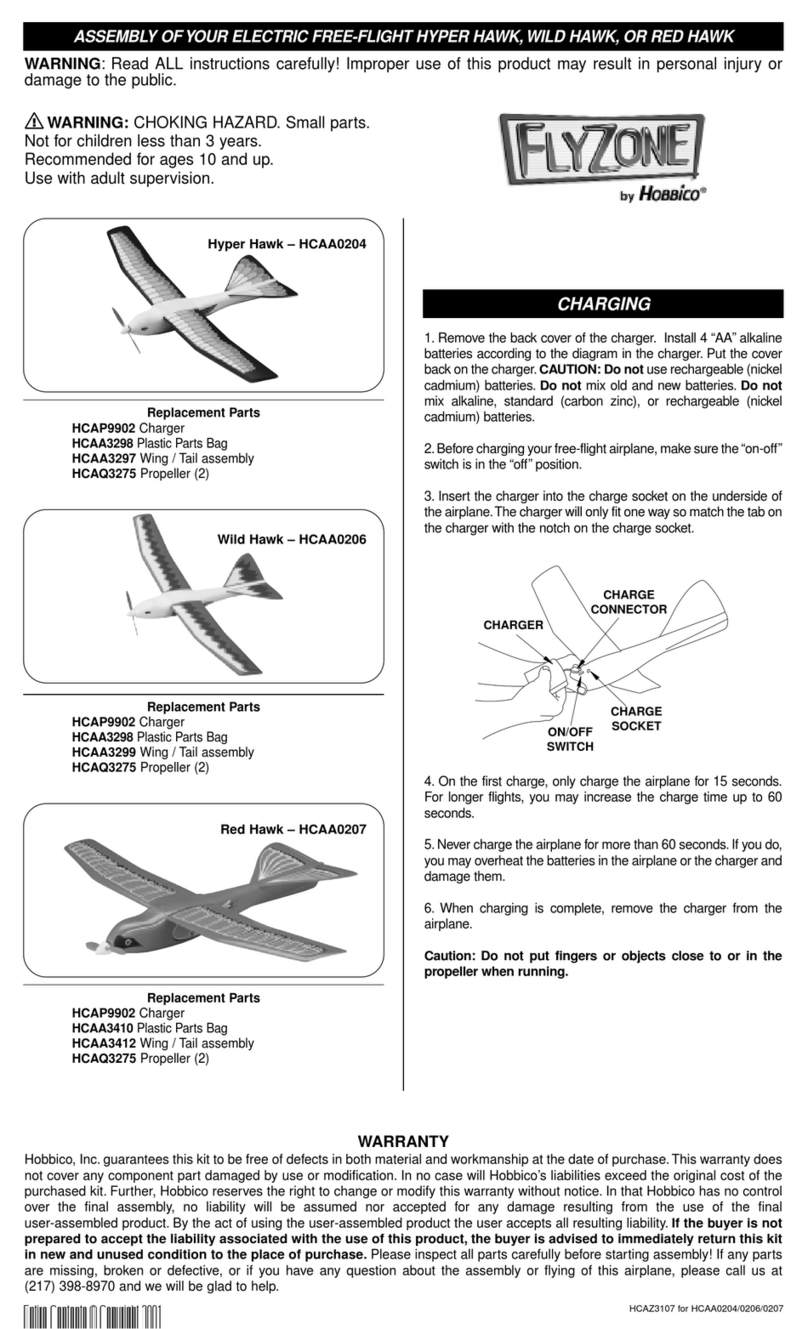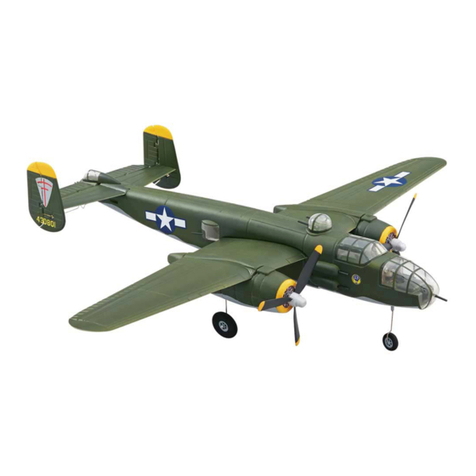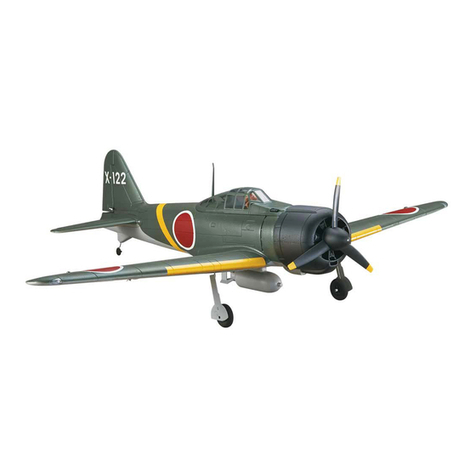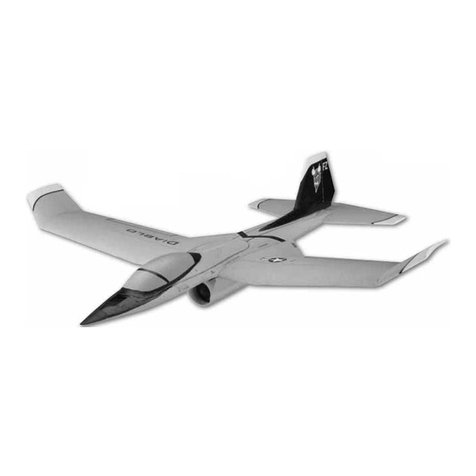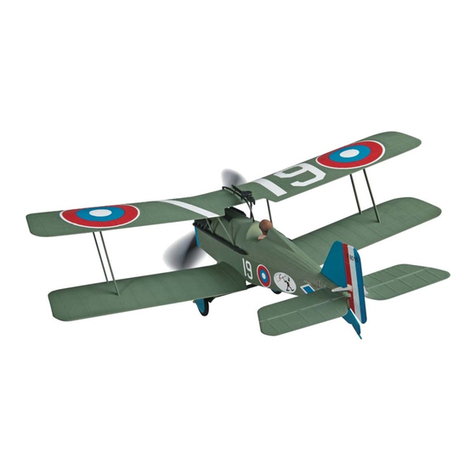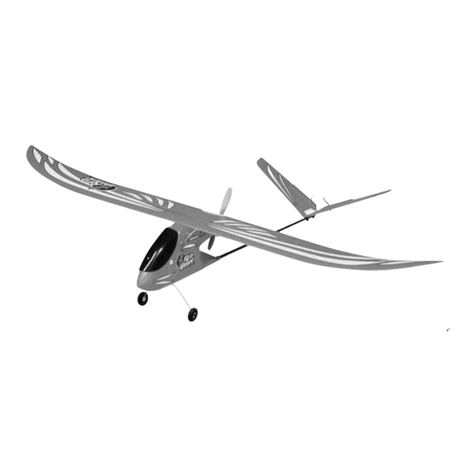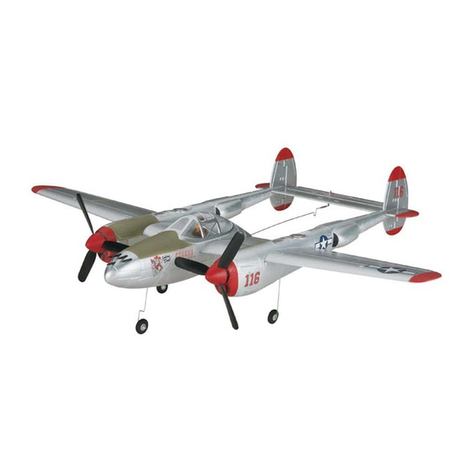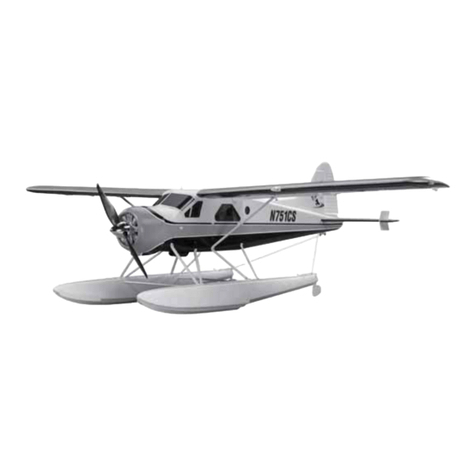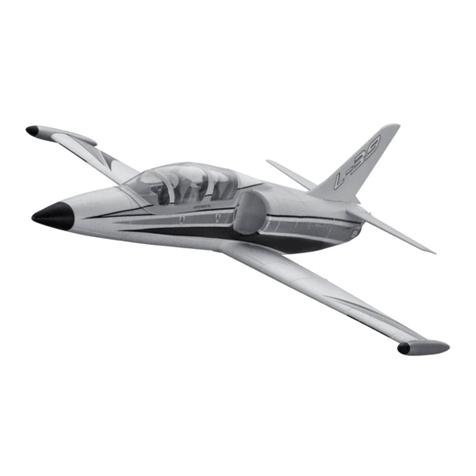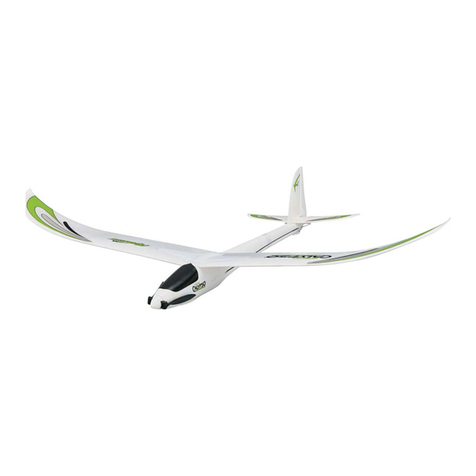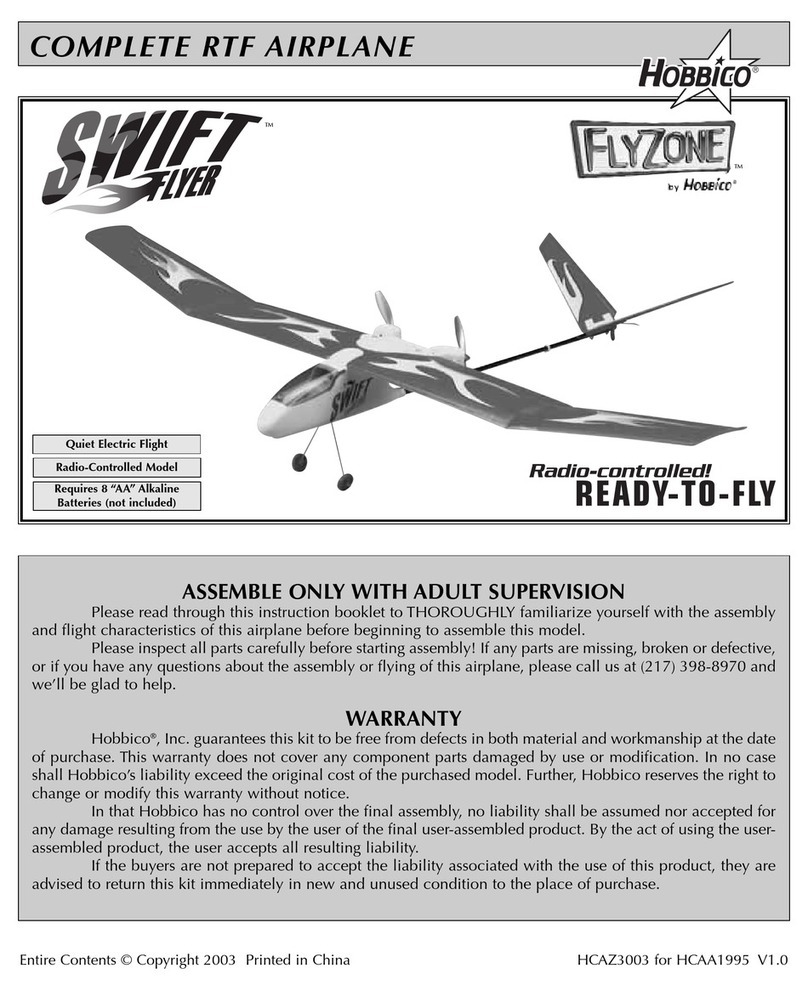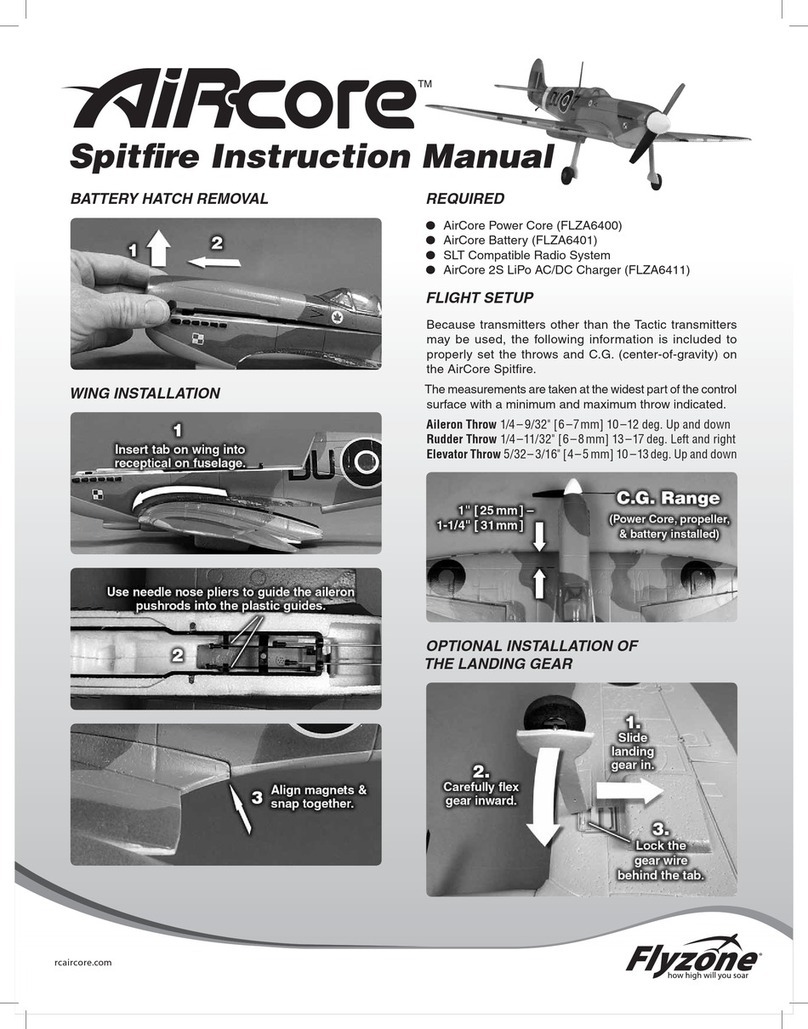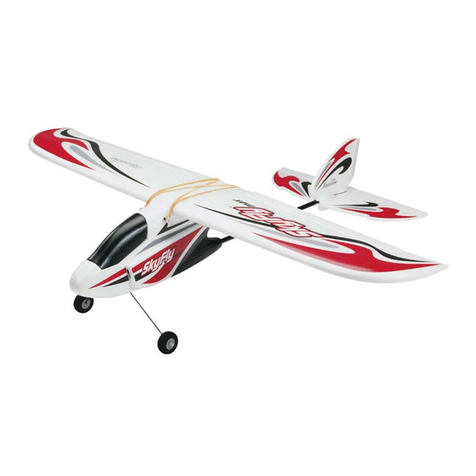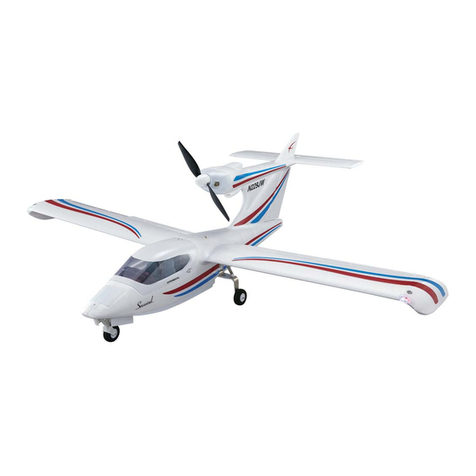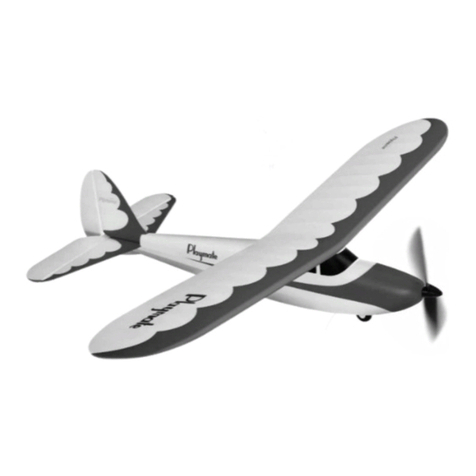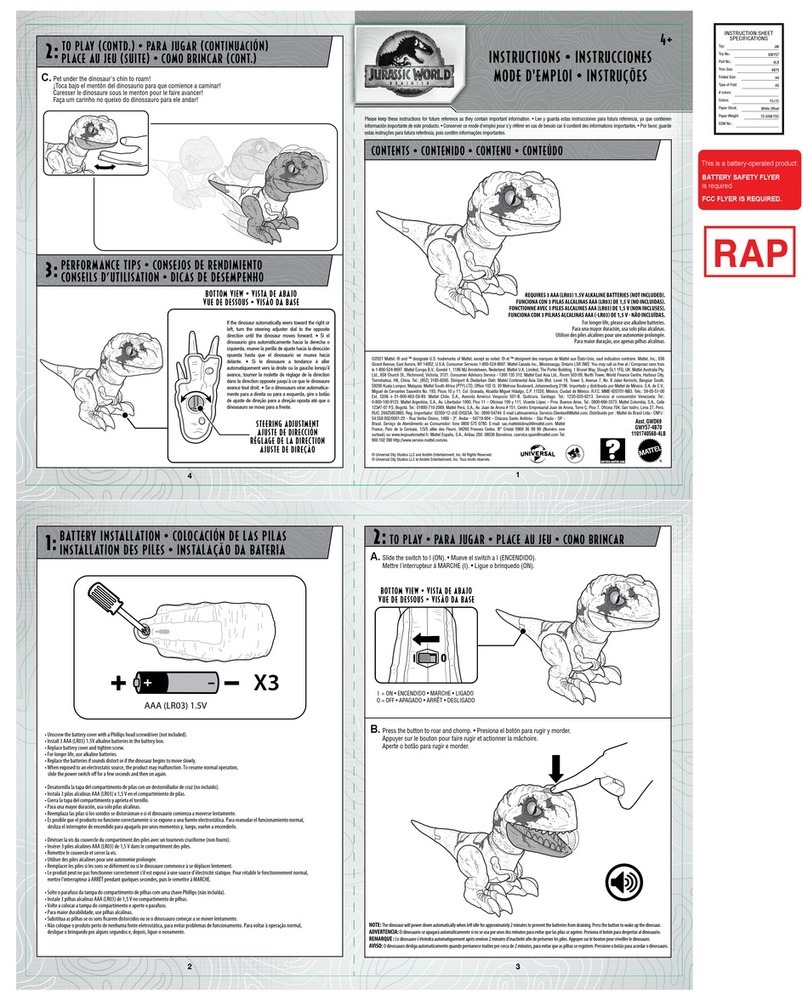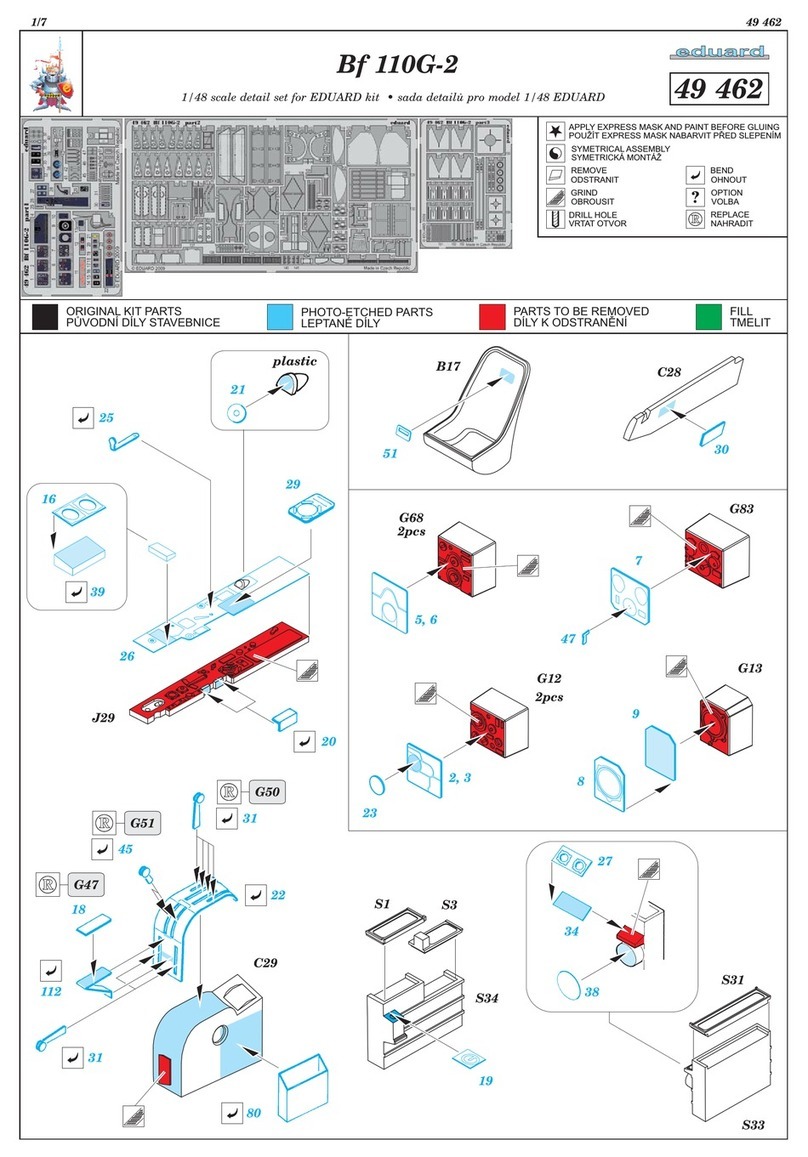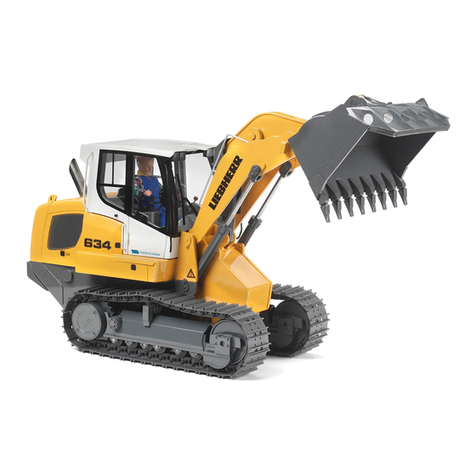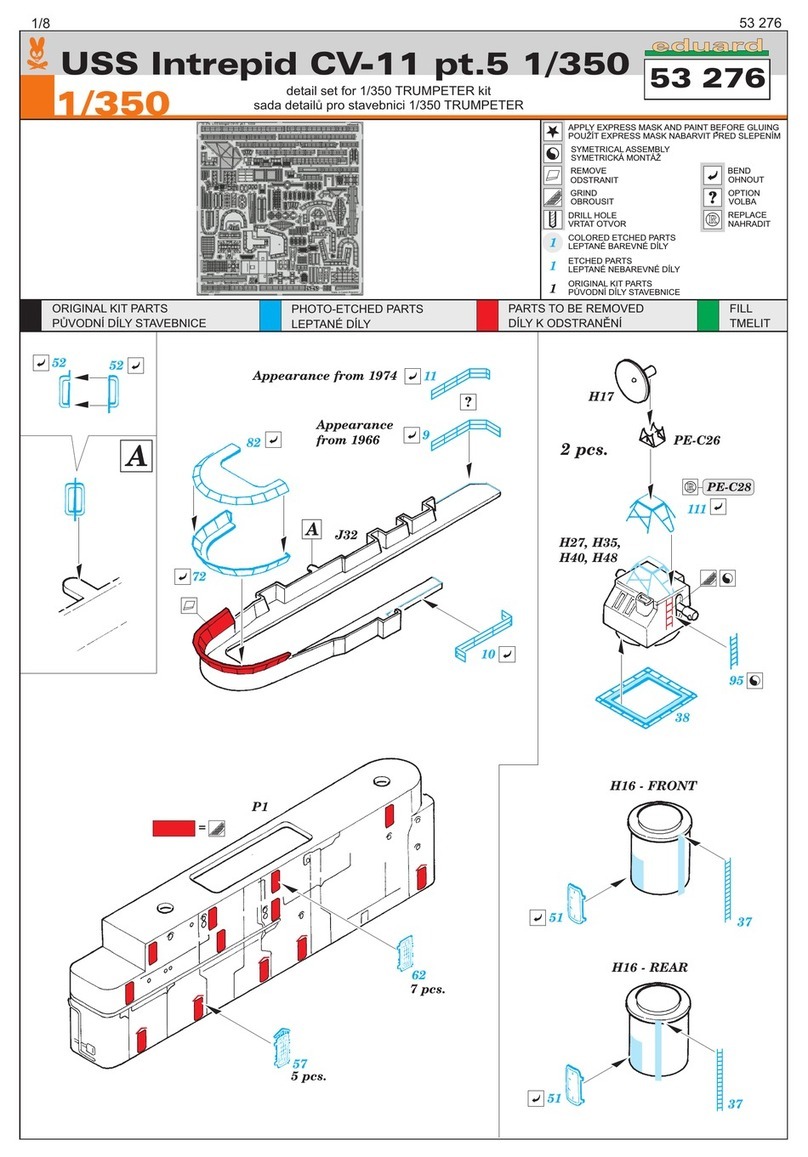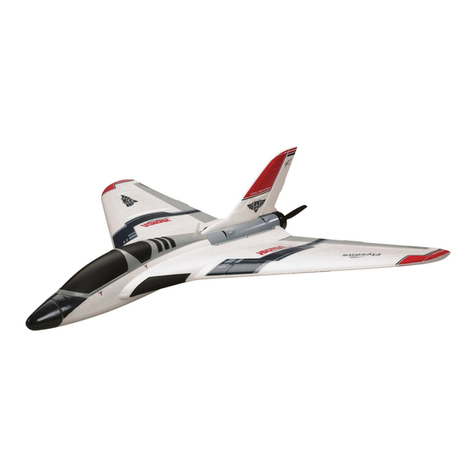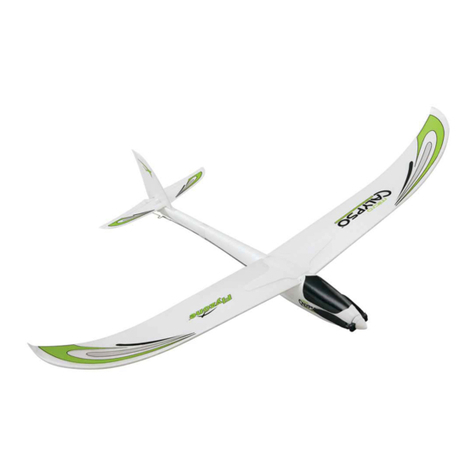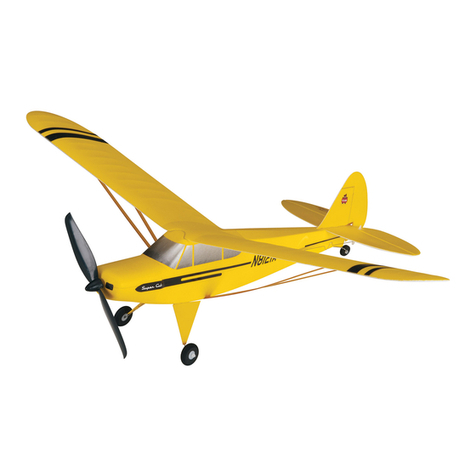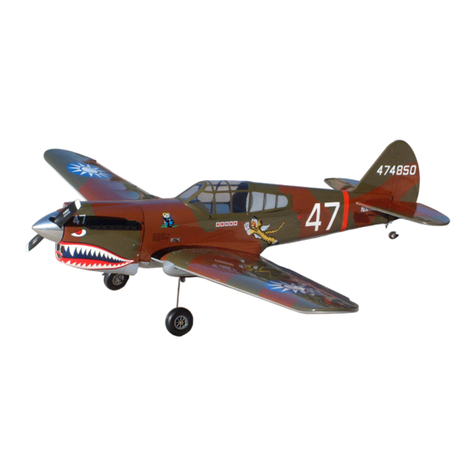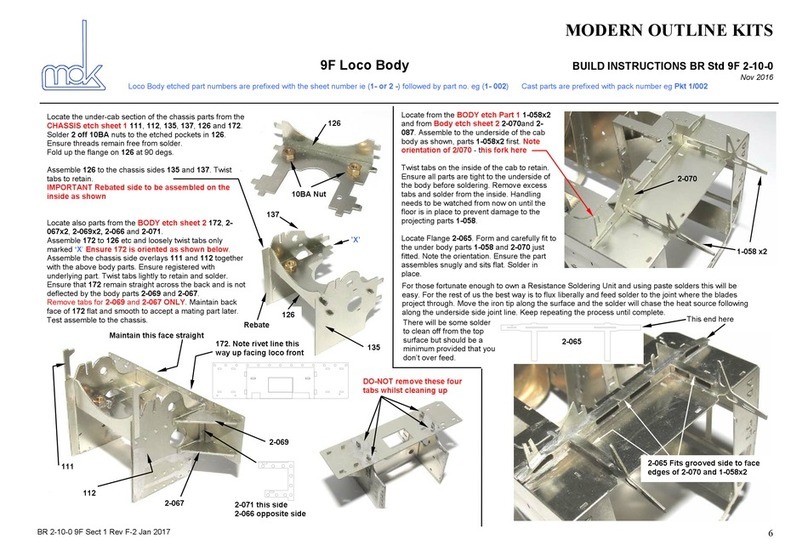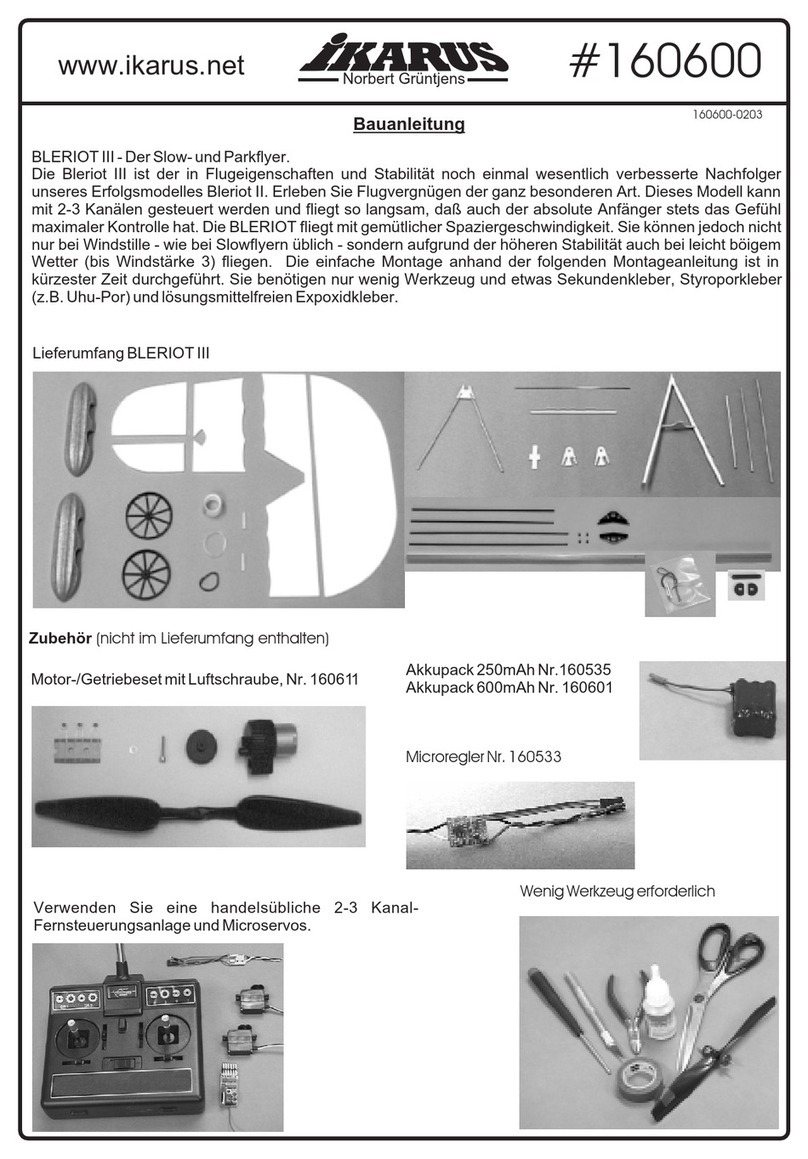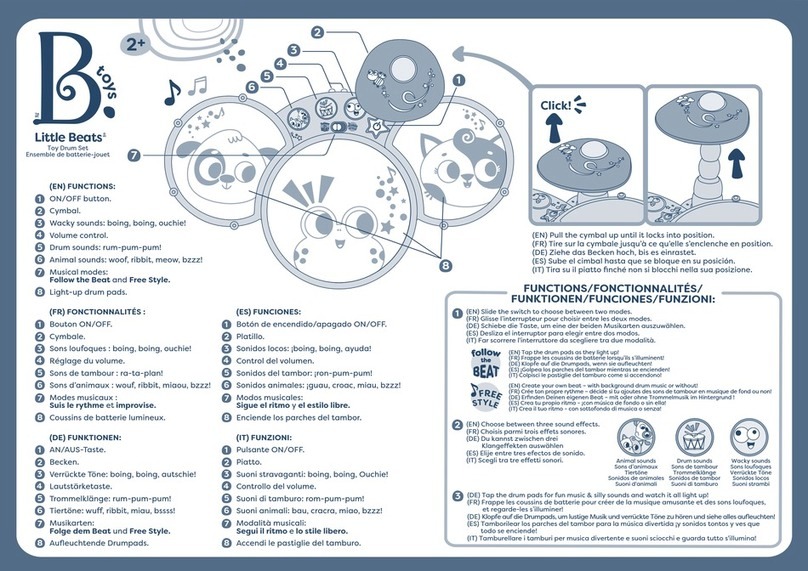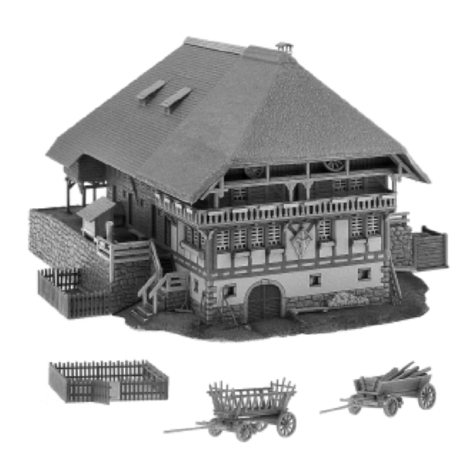
10
2) I will not fly my model aircraft higher than approximately
400 feet within 3 miles of an airport without notifying the
airport operator. I will give right-of-way and avoid flying in the
proximity of full-scale aircraft. Where necessary, an observer
shall be utilized to supervise flying to avoid having models fly
in the proximity of full-scale aircraft.
3) Where established, I will abide by the safety rules for the
flying site I use, and I will not willfully and deliberately fly my
models in a careless, reckless and/or dangerous manner.
5) I will not fly my model unless it is identified with my name
and address or AMA number, on or in the model. Note: This
does not apply to models while being flown indoors.
7) I will not operate models with pyrotechnics (any device that
explodes, burns, or propels a projectile of any kind).
Radio Control
1) I will have completed a successful radio equipment ground
check before the first flight of a new or repaired model.
2) I will not fly my model aircraft in the presence of spectators
until I become a qualified flier, unless assisted by an
experienced helper.
3) At all flying sites a straight or curved line(s) must be
established in front of which all flying takes place with the
other side for spectators. Only personnel involved with flying
the aircraft are allowed at or in the front of the flight line.
Intentional flying behind the flight line is prohibited.
4) I will operate my model using only radio control frequencies
currently allowed by the Federal Communications Commission.
5) I will not knowingly operate my model within three miles
of any pre-existing flying site except in accordance with the
frequency sharing agreement listed [in the complete AMA
Safety Code].
9) Under no circumstances may a pilot or other person touch
a powered model in flight; nor should any part of the model
other than the landing gear, intentionally touch the ground,
except while landing.
FLYING
Find a Suitable Flying Site
The Tidewater Sea Plane does not require a large pond. It
does not require that much water for your take-off and landing.
You do, however, need to have ample clear airspace for flying.
Until you are used to all of the flight characteristics of the
Tidewater we suggest that you start with a pond approximately
75-100 yards in length. If you have not flown from water before
we recommend that you seek out a fellow modeler who has
experience flying from water.
Perform a Range Check
As a precaution, an operational ground range test should
be performed before the first flight each time you go out.
Performing a range test is a good way to detect problems that
could cause loss of control such as low batteries, defective or
damaged radio components or radio interference.This usually
requires an assistant and should be done at the actual flying
site you will be using. First turn on the transmitter with the
throttle at idle (down), then install the fully charged battery
into the fuselage. Connect the battery and install the hatch.
Remember, use care not to “bump” the throttle stick.
Otherwise, the propeller will turn and possibly cause damage
or injury. To range check the Tactic TTX400 radio control
system, switch on the transmitter and connect the motor
battery to the ESC. Set the model on the ground and have
an assistant hold the model. Walk 100' (90m) from the model
and while pointing the transmitter at the plane, operate the
controls ensuring that the plane’s surfaces operate according
to the transmitter inputs. Operate the motor at different rpm.
Have your assistant alert you if the controls quit responding
or move suddenly or erratically. If you are using a different
radio control system, follow the instructions that came with
your radio control system to perform a ground range check.
If the controls aren’t working correctly or if anything seems
wrong, don’t fly the model until you find and correct the problem.
Make certain all the servo wires are securely connected to the
receiver and the transmitter batteries are in good condition.
Monitor Your Flight Time
Monitor and limit your flight time using a timer (such as one on
a wrist watch or in your transmitter if yours has one).When the
batteries are getting low you will usually notice a performance
drop before the ESC cuts off motor power, so when the plane
starts flying slower you should land. Often (but not always),
power can be briefly restored after the motor cuts off by
holding the throttle stick all the way down for a few seconds.
To avoid an unexpected dead-stick landing on your first flight,
set your timer to a conservative 4 minutes (in most conditions
the Tidewater Sea Plane will usually fly for approximately 5-7
minutes, but this can vary). When your alarm sounds you can
either land right away, or if you are an experienced pilot you
may continue to fly until you notice the airspeed begin to slow.
Then, glide it in for a landing. If planning a “dead-stick” landing,
circle your Tidewater Sea Plane upwind of the landing area
until the motor quits and note the run time. When you learn
how much flight time you are getting you can adjust your
timer accordingly. Always be conservative so the motor won’t
quit unexpectedly and you will have enough battery to land
under power. Ending your flight before the ESC cutoff shuts
off power to the motor will help maximize the lifespan of the
battery and be more enjoyable to land.




















